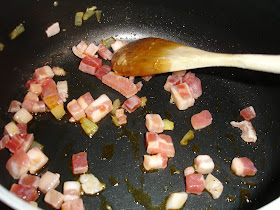The legendary author and bon viveur Hemingway is said to have enjoyed Mojitos during his time in Cuba. I love the term 'bon viveur'; on the one hand a euphemism for one who overeats or overdrinks and on the other a perfect description of those who have worked out what life is all about, it applies to some of the best loved characters and intellectuals the world has ever known. It is argued that the drink originated from El Draque made for Sir Francis Drake but appears to be widely accepted to have originated in Mexico.
Along with the similarly zingy and refreshing Caiprioska, the Mojito is one of my very favourite drinks. And I am not alone with that; it would appear to be the most popular of all the cocktails from London to Havana to even Dubrovnik (as I discovered from my Summer holiday). There are lots of variations such as the addition of icing sugar, angostura bitters or lemon juice. Some are as radical as the substitution of vodka for white rum and fruit flavoured vodka at that!
This mojito recipe is a cross between the traditional recipe (white rum, sugar, lime and soda) and a 'Dirty Mojito' (spiced rum, brown sugar syrup, lime and soda).
Mojito ingredients:
Serves 1
2 shots (50 ml) white rum (I used Green Island from Mauritius, but you can use any such as Bacardi)
Juice of one lime
2 teaspoons demerara sugar
12 leaves or 2 sprigs mint, slightly bruised to release the flavours and aroma
1 tbsp sugar syrup (see below for instructions)
Sparkling mineral water / Soda
Crushed ice
Making sugar syrup:
- To make the sugar syrup, use a measuring jug to measure out equal volumes of demerara sugar and water. I used 300 ml sugar and 300 ml water. Place into a suitably sized but stable pan and put on the hob (heated).
- Stir whilst heating to mix the water and sugar thoroughly.
- Allow to boil for a couple of minutes. You may find the impurities from the sugar (particularly if you have used unrefined sugar) come floating to the top. Take them off the surface and throw them away.
- Turn off the heat and allow to cool. Once cool, decant into a bottle with a spout for ease of use.
Making crushed ice:
- Take a couple of sandwich/freezer bags and double bag them. I used about 4 because mine are very thin and unsubstantial.
- Fill with ice cubes from the freezer.
- Crush by beating with a rolling pin. This is the bit I asked Him Indoors to do.
Making the Mojito:
- Pour the rum, lime, and syrup into a glass.
- Add the bruised mint.
- Add the sugar.
- Add crushed ice (you need about a third to half a glass, you will see from the picture we did not add enough – you live and learn).
- Muddle (ie gently mash up) with a long handled teaspoon.
- Top with soda/sparkling water.

































